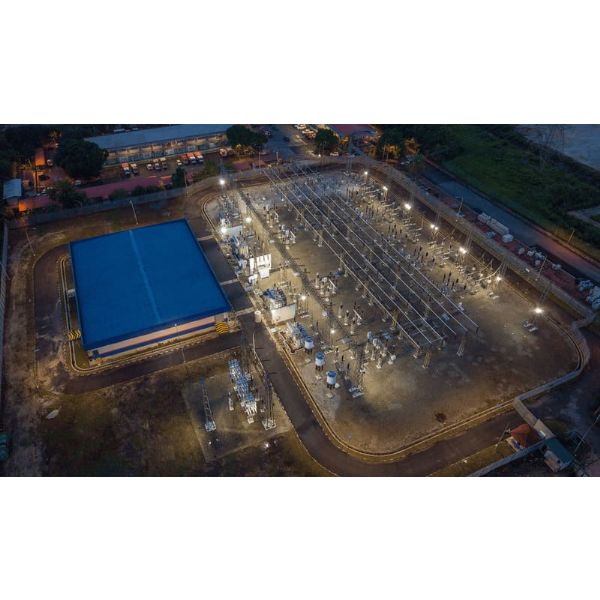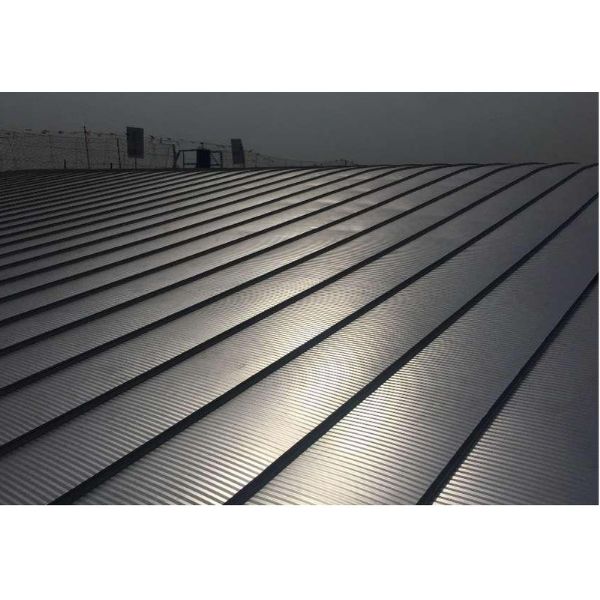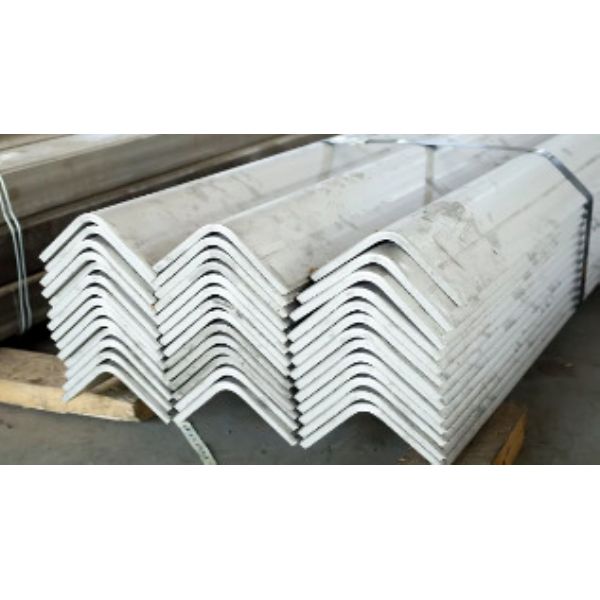Steel buildings have become one of the most sought-after solutions in modern construction, offering a perfect balance of strength, cost savings, and design versatility. Whether for residential, commercial, agricultural, or industrial use, the best steel buildings stand out as smart investments due to their durability and long-term financial advantages. Before exploring different types and features, it’s important to understand why they are such a reliable choice and what truly defines the “best” in this category.
Cost-Efficiency Compared to Traditional Construction
One of the main reasons best steel buildings are preferred is their affordability compared to conventional materials like wood, concrete, or brick. Steel structures are often pre-engineered, meaning components are manufactured off-site and then quickly assembled on-site, saving both labor time and costs. This efficiency minimizes delays, reduces waste, and keeps overall construction expenses under control. For buyers, this translates into a faster return on investment and lower upfront financial risk.
Longevity, Durability, and Low Maintenance
Steel is known for its ability to withstand harsh environmental conditions, from heavy storms to earthquakes. Unlike wood, it does not rot, warp, or attract termites, and it resists mold and mildew. This durability reduces the need for frequent repairs, lowering long-term maintenance costs significantly. Many best steel buildings can last for decades with minimal upkeep, ensuring that investors and property owners continue to benefit from their value over time.
Types of the Best Steel Buildings You Can Choose
Residential Steel Buildings
Residential steel buildings include homes, garages, and backyard storage units. Modern homeowners increasingly favor steel homes due to their energy efficiency and customization options. A steel-framed residence provides superior insulation, ensuring comfort while reducing heating and cooling costs. Detached steel garages are also popular for car protection and multipurpose storage.
Commercial Steel Buildings
Commercial steel buildings serve as offices, warehouses, and retail spaces. Their clear-span design eliminates interior support columns, creating open floor plans that allow flexible layouts. This makes them ideal for showrooms, logistics centers, and distribution facilities. Moreover, their modern aesthetic and low maintenance appeal to business owners seeking functionality without sacrificing style.
Agricultural Steel Buildings
In farming and ranching, the best steel buildings are used for barns, silos, and equipment storage. These structures protect valuable machinery, crops, and livestock from weather damage. Their rust-resistant coatings and sturdy frames provide dependable protection for decades, making them a wise choice for long-term agricultural investment.
Industrial Steel Buildings
Factories, workshops, and manufacturing plants rely heavily on the structural strength of steel. Industrial best steel buildings are engineered to handle heavy loads, cranes, and large machinery operations. Their adaptable layouts make expansion or process reconfiguration simple, supporting business growth as production needs evolve.
Institutional & Recreational Steel Buildings
Schools, churches, sports complexes, and event halls benefit from steel’s wide-span capabilities and safety standards. Recreational best steel buildings allow large open spaces without internal columns, perfect for gymnasiums, auditoriums, and community centers. They also meet strict building codes while offering modern architectural designs.
Key Features of the Best Steel Buildings

The best steel buildings are defined not only by their structural strength but also by their efficiency, sustainability, and versatility. Each feature contributes to the building’s overall performance, ensuring long-term durability, design flexibility, and financial savings. Below is a detailed look at the core attributes that make steel structures a superior choice for modern construction projects across various industries.
Strength and Durability
Steel has one of the highest strength-to-weight ratios of any building material, allowing structures to resist extreme wind loads, heavy snow accumulation, and seismic activity. Its inherent resistance to fire, pests, and corrosion ensures safety and longevity unmatched by traditional construction materials. Unlike wood, which may decay or warp over time, or concrete, which can crack under stress, the best steel buildings maintain structural integrity for decades with minimal degradation.
- Weather Resistance: Performs excellently in coastal, desert, and cold climates.
- Fire Resistance: Non-combustible and compliant with most fire safety codes.
- Load-Bearing Capacity: Ideal for large-span roofs and heavy industrial use.
Cost-Effectiveness
The best steel buildings deliver significant savings throughout their lifecycle—from construction to maintenance. Prefabricated components reduce on-site labor and material waste, while streamlined logistics shorten project timelines. Additionally, steel’s resilience lowers insurance premiums and minimizes repair costs, making it one of the most cost-effective building systems available.
- Lower Construction Costs: Prefabrication reduces labor time by up to 40%.
- Reduced Maintenance: Minimal upkeep over the building’s lifespan.
- Insurance Benefits: Fire and weather resistance lead to lower premiums.
Sustainability
Eco-conscious developers are turning to best steel buildings for their sustainability advantages. Steel is 100% recyclable and retains its quality even after multiple reuses, supporting circular economy principles. Many manufacturers now produce steel using renewable energy sources and recycled scrap. Combined with energy-efficient insulation systems and cool-roof coatings, these buildings minimize environmental impact and operational costs.
- Recyclable Material: Over 80 million tons of steel recycled annually worldwide.
- Energy Savings: Advanced insulation reduces HVAC demand by 25–35%.
- Green Certifications: Eligible for LEED and other sustainability ratings.
Design Versatility
Gone are the days when steel meant plain boxy warehouses. The best steel buildings now offer limitless architectural flexibility. From elegant residential spaces to large-span aircraft hangars, modern steel engineering supports diverse shapes, heights, and finishes. Computer-aided design (CAD) and Building Information Modeling (BIM) enable precise customization to meet both functional and aesthetic requirements.
- Customizable Exteriors: Choose from glass façades, cladding, or brick veneers.
- Flexible Interiors: Clear-span designs provide open spaces without interior columns.
- Architectural Freedom: Achieve modern, industrial, or traditional looks effortlessly.
Speed of Construction
Time is money in construction, and this is where best steel buildings excel. Their prefabricated design allows for rapid on-site assembly, drastically shortening project timelines. While traditional concrete or masonry buildings may take months to complete, steel structures can often be ready in a matter of weeks. This efficiency not only accelerates occupancy but also reduces financing and labor overheads.
- Prefabrication: Factory-built components ensure precision and quality.
- Fast Erection: Minimal welding or cutting required on-site.
- Reduced Delays: Less dependent on weather conditions compared to other materials.
Comparison Table: Key Features of the Best Steel Buildings
| Feature | Description | Benefit to Owner | Traditional Material Comparison |
|---|---|---|---|
| Strength & Durability | High tensile strength and resistance to fire, corrosion, and pests. | Long lifespan (50+ years) with minimal maintenance. | Wood rots; concrete cracks; steel remains stable and strong. |
| Cost-Effectiveness | Prefabricated for quick assembly and reduced waste. | Lower construction and insurance costs; faster ROI. | Traditional builds require more labor and longer schedules. |
| Sustainability | Made from 100% recyclable materials and energy-efficient designs. | Supports green certification and reduces carbon footprint. | Concrete and brick have higher emissions and limited recyclability. |
| Design Versatility | Flexible architecture with customizable interiors and exteriors. | Adaptable to residential, commercial, or industrial needs. | Traditional structures often lack design flexibility. |
| Speed of Construction | Prefabricated modules assembled quickly on-site. | Shorter build times mean earlier occupancy and reduced financing costs. | Brick and concrete builds can take 2–3× longer to complete. |
In summary, each of these features makes the best steel buildings a smart and forward-looking choice for investors and developers. Their balance of strength, efficiency, and sustainability ensures a high-performing structure that continues to deliver value for decades.
How to Choose the Best Steel Buildings for Your Needs
Assessing Your Purpose and Budget
Begin by identifying the intended purpose—residential, commercial, or industrial—and aligning it with your financial capacity. Define the size, functionality, and location requirements to create a clear project scope. The best steel buildings combine budget efficiency with performance goals, ensuring value for every dollar spent.
Choosing Reliable Manufacturers and Suppliers
Selecting the right supplier is critical. Reputable steel building companies like XTD Steel Structure provide certified materials, precise fabrication, and professional installation. Always verify credentials, quality standards (such as ISO certifications), and customer reviews before purchase.
Comparing Costs and Long-Term Value
While initial prices matter, long-term savings define a smart investment. Compare lifecycle costs—including maintenance, energy use, and insurance. The best steel buildings deliver substantial ROI through durability, energy efficiency, and reduced upkeep over decades.
Customization and Future Expansion Options
Flexibility is a hallmark of steel design. Choose modular systems that allow easy expansion as your needs grow. The best steel buildings are designed to accommodate future add-ons without structural compromise, saving costs on reconstruction later.
Future Trends in the Best Steel Buildings Market
The construction industry is rapidly evolving, and the best steel buildings are at the forefront of this transformation. From digital fabrication to sustainable energy systems, the sector is witnessing a technological and environmental revolution. Understanding these trends helps investors, architects, and builders align with future opportunities and ensure long-term profitability.
Technological Innovations in Steel Construction
New digital technologies are redefining how best steel buildings are designed, fabricated, and maintained. Advanced Building Information Modeling (BIM) systems, 3D laser scanning, and AI-based project management are now standard tools in modern construction workflows. These technologies minimize human error, optimize resource allocation, and improve precision from concept to completion.
- 3D Modeling & BIM Integration: Enhances collaboration between engineers, architects, and clients by creating a shared digital model of the entire building.
- Automation & Robotics: Automated welding, cutting, and assembly reduce production time and human labor, improving efficiency by up to 40%.
- AI & Predictive Maintenance: Smart sensors detect stress points, corrosion, or fatigue, ensuring proactive maintenance of steel structures.
- Modular & Hybrid Systems: Prefabricated steel modules simplify logistics and allow faster on-site assembly with consistent quality.
These innovations ensure that the best steel buildings are smarter, faster to build, and more adaptable than ever before—paving the way for Industry 4.0-level construction efficiency.
Green Building and Sustainability Practices
With global sustainability goals becoming stricter, the best steel buildings now integrate eco-friendly solutions at every stage of design and operation. Steel’s recyclability and low waste production already make it one of the greenest building materials, but the industry is going further—embracing net-zero energy performance and circular economy principles.
- Renewable Energy Integration: Solar roofing systems and wind-powered facilities enhance energy independence.
- Rainwater Harvesting & Reuse: Built-in drainage and collection systems promote responsible water management.
- Thermal Efficiency: Reflective roofing panels and advanced insulation reduce HVAC loads by up to 35%.
- Eco-Certifications: Many best steel buildings now achieve LEED, BREEAM, or Green Star certification standards.
These innovations align with global climate commitments and make steel structures a key player in sustainable urban development. Forward-thinking manufacturers are even developing low-carbon or hydrogen-based steel to further reduce emissions during production.
Market Growth and Global Demand
Worldwide, the steel construction market continues to expand steadily. According to industry analyses, the global pre-engineered steel building market is projected to grow at an annual rate of over 11% between 2025 and 2030. This surge is driven by industrialization, e-commerce logistics, and the growing need for flexible infrastructure.
- Asia-Pacific: Rapid urbanization in China, India, and Southeast Asia is fueling large-scale infrastructure investments.
- North America: Strong demand for warehouses, manufacturing facilities, and data centers supports continuous steel construction growth.
- Europe: The focus on sustainability and green manufacturing drives modernization of industrial zones using best steel buildings.
- Middle East & Africa: Rising investments in logistics, oil, and renewable energy sectors boost demand for modular and durable steel structures.
Steel’s cost-efficiency, durability, and sustainability make it the go-to material for both emerging and developed economies, ensuring consistent demand worldwide.
Predictions for 2025 and Beyond
The coming years will see best steel buildings evolve into intelligent, fully integrated assets. Industry experts forecast that digital fabrication, smart monitoring, and modular construction will dominate the global market. AI and IoT-based systems will allow real-time control of structural health, energy use, and environmental performance.
- Digital Twin Technology: Virtual replicas of buildings enable predictive maintenance and energy optimization.
- Smart Sensors & IoT Integration: Automated monitoring of temperature, load stress, and humidity enhances safety.
- Offsite Manufacturing: More than 70% of components for best steel buildings will be fabricated offsite for speed and precision.
- Carbon-Neutral Steel Production: Hydrogen-reduced steelmaking processes will drastically lower CO₂ emissions.
By 2030, the global trend toward intelligent infrastructure, green construction, and digital transformation will firmly establish steel as the dominant material of choice in commercial and industrial architecture.
Summary Table: Emerging Trends Shaping the Best Steel Buildings
| Trend Area | Key Innovation | Impact on Best Steel Buildings | Benefit to Investors |
|---|---|---|---|
| Technology | AI design, robotics, 3D modeling | Improved precision and faster construction cycles | Reduced costs and shorter project delivery time |
| Sustainability | Recyclable materials, energy-efficient insulation | Lower environmental footprint, LEED compliance | Eligibility for green incentives and tax credits |
| Market Demand | Growth in logistics, renewable energy, data centers | Expanding applications for modular steel designs | High ROI from growing infrastructure investments |
| Future Outlook (2025+) | Smart buildings, IoT sensors, carbon-neutral steel | Integration of digital twins and automated monitoring | Stronger asset performance and long-term sustainability |
In summary, the future of the best steel buildings market lies in innovation, sustainability, and digital transformation. Investors and developers who embrace these trends early will not only gain a competitive advantage but also contribute to shaping a smarter, greener, and more efficient built environment.
Conclusion: Making the Smart Choice with the Best Steel Buildings
In conclusion, investing in the best steel buildings is more than just a construction decision—it’s a strategic move toward long-term stability, efficiency, and growth. Their unmatched durability, cost savings, sustainability, and design flexibility make them the top choice for modern developers, entrepreneurs, and property owners. Whether for residential comfort, commercial expansion, or industrial operations, steel delivers proven value that lasts for generations. When chosen wisely, this investment becomes a foundation for smarter, more resilient success.






